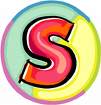Come! Come! Come now!
 Here’s a bus coming! Hurry up!!!
Here’s a bus coming! Hurry up!!!
 Don’t trouble trouble until trouble troubles you.
Don’t trouble trouble until trouble troubles you.
NB!Listen to the sound [a:] with R pronounced, as in North America (A 63):
far bar heart march card star start charm chart
In South East England, the letter A followed by S, F, TH, N is often pronounced [a:]:
ask fast after path bath dance aunt
In North America, the single letter O is pronounced [a:]:
God strong lock top
Ex.9 Listen to these sentences. Is the accent from North America or South East England? Write Am or Eng, as in the example. (A67)
EXAMPLE He asked her to dance. ____Eng______
1. We started in March. ________
2. It’s a fast car. _________
3. My heart’s strong. _______
4. Where’s the bar? _________
5. It stops and starts. ________
6. A glass of beer. _________
7. Was his hair dark or fair? ________
Ex.10 Play this lengthening game. Choose any words from the list below.
EXAMPLE
Student A: My uncle went to Argentina and spent a lot of money. He bought a bottle of rum.
Student B: My uncle went to Argentina and spent a lot of money. He bought a bottle of rum and a guitar.
Each student adds something to the list, and you must remember what the other students have said.
Practise saying the words before you start:
a cup a rubber duck
a bus a scarf
some nuts a glass
comfortable gloves a carpet
a brush a car
a dozen buns coloured sunglasses

Endings adding a syllable
-s endings (plural, third person singular, possessive) / -ed endings (past tense)
Normally an ending does not add up an extra syllable to the word (hat [hæt] CVC – hats [hæts] СVСС or play [pleı] CCV – played [pleıd] CCVC).
But sometimes endings are another syllable (fax [fæks] is one syllable, but faxes [fæksız] is two syllables or hate [heıt] is one syllable, but hated [heıtıd] is two syllables)
 Ex.11 Write the third person forms of the verbs from the box in the correct part of the table below. Then listen, check and repeat. (B28)
Ex.11 Write the third person forms of the verbs from the box in the correct part of the table below. Then listen, check and repeat. (B28)
| 1 syllable O | sings |
| 2 syllables Oo | watches |
Ex.12 Write the past tense of the verbs from the box in the correct part of the table. Then listen, check and repeat. (B33)

| 1 syllable O | walked |
| 2 syllables Oo | hated |
NB!With –s endings we sometimes get a lot of consonant sounds together at the end syllables, for example, facts [fækts]. Many speakers of English make it simpler and do not pronounce one of the consonants, for example, they may pronounce facts like fax [fæks].
Ex.13 These speakers are not pronouncing all the consonants at the end of some words. What are they saying? Write the sentences.




___________________ __________________ ___________________ ___________________
(sounds like [hæns] up. My favourite [sΛbdʒәks] There are many The [wınz] very strong
chemistry. [kaıns] of whales. today.
Ex.14 Complete each sentence with the past tense of a verb from the box to follow a pattern. In each sentence, the first sound of the verb is the  same as the first sound in the person’s name. Then listen, check and repeat. (B34)
same as the first sound in the person’s name. Then listen, check and repeat. (B34)
| OOO | OoOoOo |
| Paul ___played___ games. Ken _____________ lunch. Fred ____________ friends. Marge ___________ drinks. Will ____________ films. | Peter ___painted____ pictures. Karen _____________ money. Stella ______________ singing. Alice _______________ sugar. Sheila _____________ loudly. |
Ex. 15 Match the beginnings and ends of these rhymes.
 1. The people queued a) was never found
1. The people queued a) was never found
2. The things you missed b) are on the board
3. The man controlled c) and then she smiled
4. She saw the child d) to build on sand
5. The boat that crossed e) are on the list
6. The man who drowned f) until she coughed
7. The snow we rolled g) the nation’s gold
8. Her voice was soft h) to buy the food
9. The points we scored i) was nearly lost
10. We never planned j) was hard and cold.

Keeping your speaking turn
In a dialogue sometimes you need time to think your answer over, in this case you have to show that you want to continue talking, that you are still in the conversation, otherwise your interlocutor might think that you are not going to answer. Traditionally we make the word before the pause longer (in transcription we use the lines of six dots ::: to show such pauses).
A: What did you think of the music?
B: Well, it was::: interesting.
We often say noises like ehm to keep our speaking turn while we are thinking of what to say or doing something else. In the example below, the speaker says it to keep his speaking turn while he looks at his watch.
A: What’s the time?
B: Let’s see, it’s ehm::: nearly seven.
Ex.16 In all of these conversations, the second speaker is doing something else at the same time as speaking. Guess which of these things the second speaker is doing and write it. Then listen and check. (C19)

EXAMPLE
A: My phone number’s 0673786.
B: Just a moment, so that’s ::: 0:::6:::7:::3:::7:::9:::
A: No, 8. It’s 3786.
B: Ah, ok, 8:::6.
______the second speaker is writing the numbers down________
1. A: Hi! I have an appointment to see Ms. Jones.
B: Yes, so you must be Mr.::: Mr.Gleason?
_____________________________________________________
A: Yeah, that’s right.
2. A: It’s just over 50 pounds.
B: Right, so that’s ehm::: about 70 dollars.
_____________________________________________________
3. A: Let’s meet on Thursday.
B: Let’s see, Thursday::: Thursday::: yes, Thursday, that’s fine.
_____________________________________________________
4. A: Can you change this ten for two fives?
B: I think so, let’s see, ehm::: yeah, sure. Here you are.
_____________________________________________________
Ex.17 Listen to these sentences. Does the person want to keep the speaking turn (write …) or has he/she finished (write .)? (C20)
EXAMPLE I like all kinds of music really, you know, ehm::: rock and roll…
1. I don’t really have much time to ehm::: to listen to music
2. Yeah, I love Brazilian music, people like Gal Costa
3. She plays quite a lot of instruments, piano, guitar
4. Dad’s really into classical music, you know, specially Mozart
5. I started the piano when I was, let’s see, ehm::: fifteen

Letters and sounds
Consonants: [s – z]
To make the sound [s]: Touch your side teeth with the sides of your tongue. Put your tongue forward. Do not use your voice.
To make the sound [z]: Follow the instructions above, use your voice.
Ex.1 Listen and repeat.
[ s ]
sun sand sleep six Sue





bus piece


[ z ]
zoo zero lazy blouse scissors





wise Times


Ex.2 Listen and repeat the words paying special attention to sounds [ s – z ].
 Sue - zoo
Sue - zoo 
 said - Z
said - Z 
 sip - zip
sip - zip 
 bus - buzz
bus - buzz 
 piece - peas
piece - peas 
 price - prize
price - prize 
Ex.3 Practise saying the tongue twisters.
 It’s nice of you to say so, sir.
It’s nice of you to say so, sir. 

 I’m so sorry to be such a nuisance.
I’m so sorry to be such a nuisance.

Дата добавления: 2014-12-02; просмотров: 1202;
